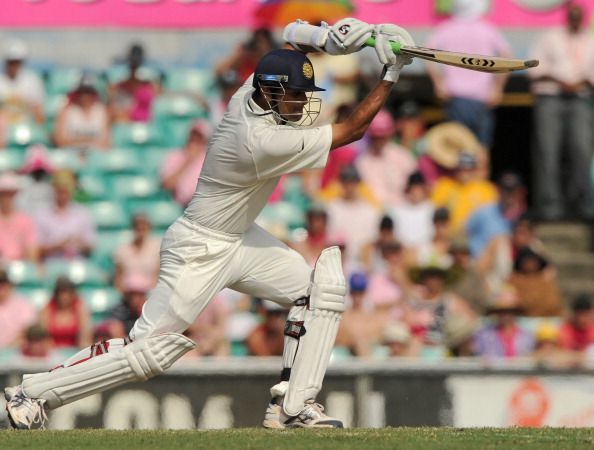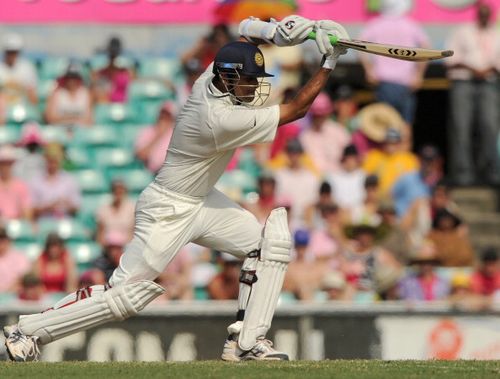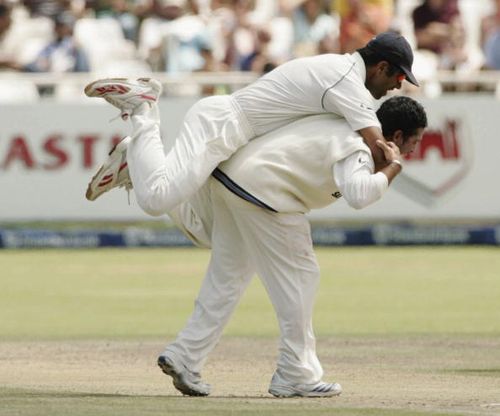
Rahul Dravid: Ruthless and Determined

Rahul Dravid
It was December 2008. Against the ghastly terror attacks in Mumbai, was played the second Test match between India and England at Mohali.
People hardly cared about who would emerge as the winner, for all they wanted was just a game of cricket to divert their minds. But they did care enough to know that India’s number 3 had failed long enough to be guaranteed a spot in the side any longer. The previous match in Chennai had produced one of the most dramatic run-chases, with Sachin Tendulkar scoring an unbeaten century to help India chase down a record total of 387.
Sourav Ganguly had been forced to retire after a poor series, and experts suggested that he was made the scapegoat to protect his fellow seniors. Another failure for India’s most prolific number three would have, in all probability, brought down curtains on an illustrious career spanning over twelve years. At the fall of an early wicket, in walked the man in the firing line, Rahul ‘The Wall’ Dravid.
The English bowlers were making the ball talk a great deal, thanks to the early morning moisture in the pitch coupled with the overcast winter chill. There was hardly an ideal time for any batsman, leave alone a batsman who was miserably out of form. For the first hour or so, Dravid played and missed; got edges which fortunately did not carry to the slips; survived close lbw calls; took some lusty blows on his knuckles; but not once did he give up. Commentators on air were suggesting that he should come out of his shell and throw his bat around to get some quick runs that could put the opposition on the back foot.
But Dravid was not going to ditch a technique that had helped him mount runs for over a decade, and across the globe, because of a few failures. It was only after 18 overs that he scored his first boundary, which was incidentally his first in his last five innings. He looked to go through the grind to find his timing and feet movement. He knew very well that a failure in this innings could be disastrous.
It was only a matter of time before before he began to drive with elegance, pull with authority and cut with power to produce yet another century with a stamp of determination. A unique kind of determination, which only he could be associated with. The determination to back his strengths no matter what. The determination to bat as if his life depended on that wicket.
A century in 265 balls, slow even by his own standards. Each run was a struggle: a struggle to survive, not just to survive another delivery, but to survive another match. As the English players came over to shake his hand, Andrew Flintoff jokingly asked him to nick one to the keeper if he was done with the ordeal.

For a change – Rahul Dravid carried by someone else
Through the 2000s, the Indian team was privileged to have the aggressive strokeplay of Virender Sehwag, the master class of Sachin Tendulkar, the shrewd captaincy of Sourav Ganguly, and the wily spin of Anil Kumble. It was no wonder that this team was the most successful team in the history of Indian cricket. But all of this would have been futile had it not been for Rahul Dravid‘s calm presence at the other end. With such superstars in the team, someone was required to play the second fiddle, and he did so with aplomb.
He was nicknamed the ‘Wall’ of Indian cricket; but, in reality, he was the foundation on whose shoulders all the success was achieved and the pillar that supported the giant star beams of Indian cricket. It is no surprise that when Tendulkar and Ganguly scored their monumental 186 and 183 respectively, Dravid was at the other end. He had a century to his name, as well, but who cared about that? Dravid was surely the last one to.
He has opened the innings when India struggled to find a wicketkeeper-batsman, stood at first slip despite a dodgy back, batted at every possible position from one to eight, and would have even bowled if he was asked to. After being unceremoniously dropped from the ODI side only one series after he resigned as captain, he was picked for the Champions Trophy to be played in alien and difficult South African conditions and was dropped yet again because the next series was to be played at home in familiar conditions. He was forced to play a T20 international, a format that isn’t suited to his style of batting, when India struggled to put eleven fit players on the field. To go through all this without raising a hue and cry can only command respect. If ever the phrase ‘Team player’ needs to be explained to any budding cricketer, a better example couldn’t exist.
From a classy player to a commentator who makes fun of his own strike rate, the transition was seamless. On the field, he provided a welcome relief from the hit-and-go batsman, and, in the commentary box, he provided a relief from the self-centred former players who loved to talk about their achievements. Dravid the player vs. Dravid the commentator is a debate which is sure to go on for good.
Once when a fan told him about how much he liked the way he batted, he responded by saying ‘Oh so you like boring cricket too’. Thank you Dravid for all the memories – the sight of the Indian blue shirt always a couple of shades darker than the pant, the white trouser turning red after every ball thanks to all the ferocious ball rubbing, the helmet leaking like a hose, and the hands constantly clapping for over two days.
As John Wright said, “His team mates called him Jam, but ‘Gem’ was more apt for he was very precious for India.” Truly, a ruthless and a determined gem.